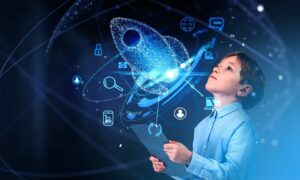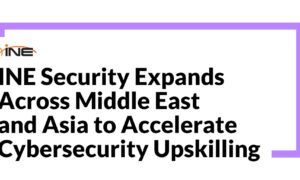We’re living in an age where artificial intelligence (AI) is changing the way we work, communicate, and now, how we learn. Across classrooms globally, the conversation around artificial intelligence in schools has shifted from futuristic speculation to practical integration. Teachers are using AI tools to personalize instruction, students are receiving real-time feedback from intelligent systems, and school administrators are optimizing resources through machine learning algorithms. The presence of AI in education isn’t just a passing trend, it’s a revolution in the making.
Among the many AI-driven platforms now available, tools like AI Homework Helper stand out by offering students a free homework guide without a login that simplifies even the most complex academic tasks. These resources eliminate barriers to access and make support readily available to every learner. More than just study assistance, artificial intelligence is changing the way teaching and learning occur in real classrooms.
Why AI in Schools Is Gaining Popularity
More and more institutions are embracing AI in schools to streamline operations and enhance learning outcomes. AI helps identify student gaps, track progress over time, and even predict academic performance based on patterns.
Moreover, digital platforms are making it easier for students to get the help they need when they need it, often without waiting for office hours or tutoring sessions. AI allows for 24/7 support, a critical benefit for students juggling multiple responsibilities.
Why AI Belongs in Classrooms
Personalized Learning at Scale
Traditional classrooms often struggle to meet diverse learning needs. The latest use of AI in education fills this gap by analyzing patterns, adjusting content dynamically, and offering real-time feedback. A student struggling with algebra can receive different problems and explanations than a peer ready for enrichment. This flexibility ensures every learner progresses at an optimal pace.
Intelligent Homework Assistance
Phrases like “help me with my assignment” no longer rely on expensive tutors or scheduled sessions. Now, many tools provide round-the-clock support, particularly useful when students seek help solving tricky problems. Instant math help builds confidence and understanding without breaking the bank.
Smarter Assessments
Automated grading powered by AI in the classroom saves teachers enormous time, especially with large cohorts. AI can grade essays and quizzes and even provide instant positive reinforcement or guidance on errors, enabling educators to focus on deeper instruction and mentorship.
AI and Lifelong Learning
Continuous Education
An advantage of AI isn’t just for K–12; AI and learning extend into adult education, professional development, and upskilling. Adaptive platforms help learners master new languages, technical certification material, and soft skills, all at their own rhythm.
Learning Analytics for Educators
Teachers armed with analytics dashboards can monitor progress, spot misconceptions, and intervene before students fall behind. This proactive monitoring shifts education from reactive to preventive.
Teaching with Artificial Intelligence
Educators are evolving into facilitators and designers of learning experiences. Instead of lecturing, they orchestrate activities, mentor students, and collaborate with AI to handle routine tasks like grading and homework feedback.
Responsible AI Use in Schools
While how AI can be used in education is expanding every year, there are safeguards to consider:
Privacy & Ethics
Data privacy must be prioritized. As we use of artificial intelligence in education grows, so does the need for secure practices to protect student information.
Classroom Balance
Integrating AI should complement, not replace, instructor-led methods. Dynamic group work, peer discussion, and collaborative learning remain essential.
Accessibility Equity
Not all students have equal access to technology. Solutions must address should artificial intelligence should be used in schools with thoughtful provision of devices and connectivity.
Academic Integrity
Students must be taught to leverage AI as a learning aid, not a shortcut. Encouraging thoughtful questions, critical reflection, and clear citation ensures students should be allowed to use AI in school becomes a conversation about ethical use, not avoidance.
AI Across Grade Levels
Elementary and Middle School
Early education benefits from interactive, playful learning. AI in elementary education takes the form of animated challenge games, pronunciation tools, and storytelling bots, making early learning safe, fun, and engaging.
Secondary School
Teens can access advanced tools: instant essay feedback, real-time math analyzers, research guidance, and citation assistants. High schoolers using Homework Helper to learn, validate ideas, receive remediation, and tackle tougher math or science assignments.
Higher Education and Beyond
College and lifelong learners leverage specialized AI tools for coding, data analysis, language practice, and research writing. The focus shifts from basic knowledge to developing critical, transferable skills with personalized coaching.
The Road Ahead for AI in Education
- Hybrid Learning Models: AI-powered tutoring complements live teaching to create blended experiences that are efficient and scalable.
- Inclusive Design: AI-equipped classrooms will automatically adjust languages, fonts, and pacing to suit neurodiverse learners.
- Global Classrooms: Multilingual chatbots and translation tools promise international collaborations between students from different countries in real time.
- Teacher’s Assistant Tools: AI that helps develop lesson plans, generate quizzes, and collect insights frees educators to focus on relationship building.
- Ethical AIs: AI tools will become transparent and fair, with decisions explained and biases proactively addressed.
Final Reflection
The fusion of artificial intelligence applications in education and human insight holds immense promise. Done correctly, AI becomes a partner in learning, providing personalized guidance, deep insights, and intuitive support without losing the human touch.
As we look ahead, the question isn’t whether AI should be allowed in schools, but how well can we use it to enhance learning and uplift every student? With careful, ethical, and inclusive implementation, we can redefine education together.

































